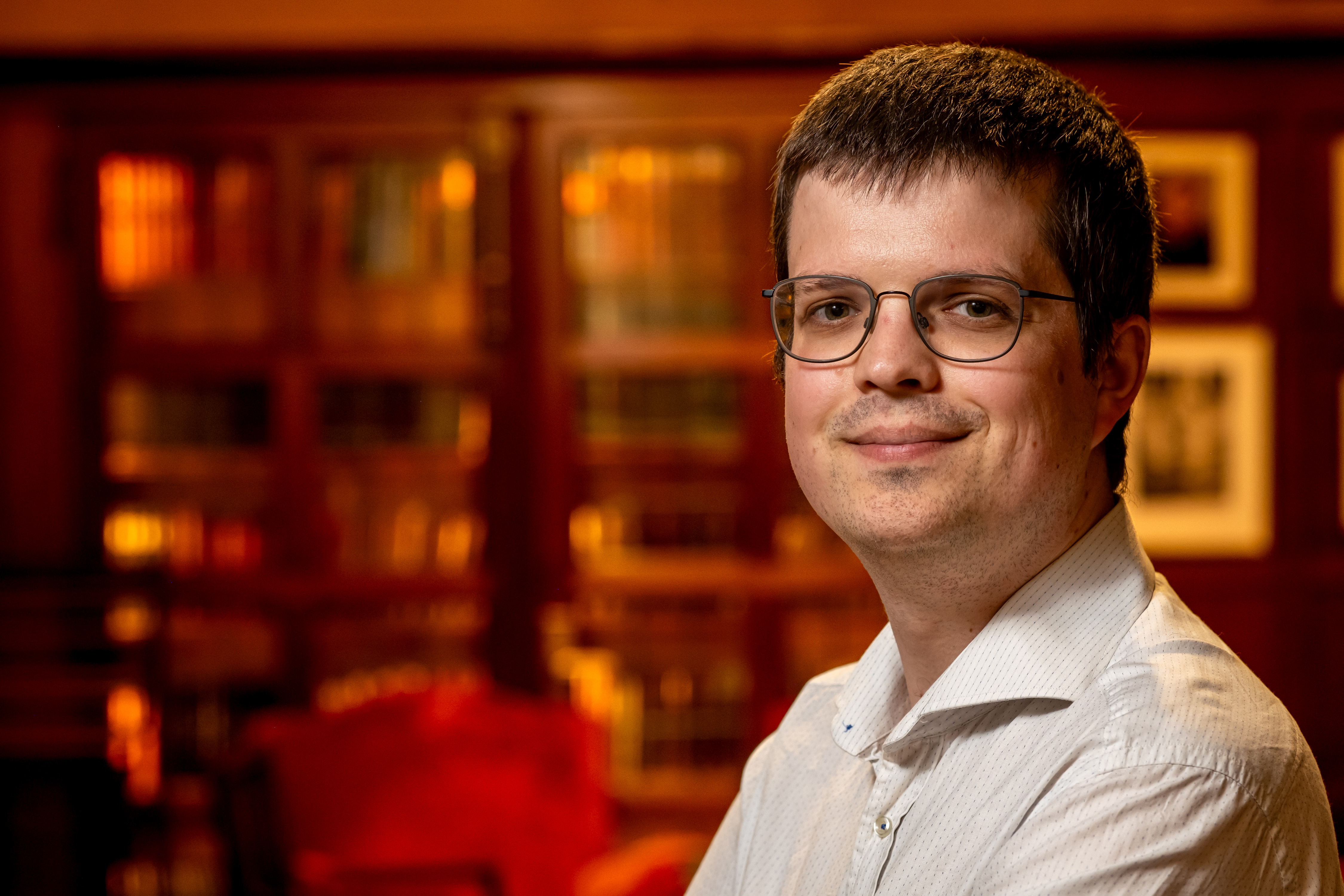About
- Photo credit: Danny Gys/FNRS

My academic career started at the Université Libre de Bruxelles (ULB) , where I did my PhD in the nuclear theory group under the supervision of Prof. Dr. Ir. Paul-Henri Heenen (2012-16). After two postdoctoral stints at the IP2I in Lyon with Dr. M. Bender and at Yale University with Prof. Dr. Y. Alhassid, I joined the astrophysics group of ULB in 2020 through a postdoctoral research grant of the research fund of the French-speaking part of Belgium, the F.R.S.-FNRS. At the end of this grant, the F.R.S-FNRS hired me as permanent Research Associate (Chercheur Qualifié in French).
My main research topic is the large-scale description of nuclear structure: I try to predict in a reliable and global way all observables of a nucleus starting only from its total number of protons and neutrons? This is enormously difficult for two reasons. First, the description of the atomic nucleus constitutes what is known as a quantum-mechanical many-body problem: the complexity of the equations scales impossibly quickly with the number of nucleons such that exact solutions are not feasible even for light nuclei. Second, we do not even know how to write the relevant equations down: there is no closed expression for the interaction between the nucleons inside a nucleus, a state of affairs that is very different from, say, atomic physics.
Because of these difficulties, we have to resort to effective models. The main (but not the only) tool I use is energy density functional (EDF) theory: an EDF is a simple formula that provides us with the total energy of a nucleus as a function of the precise configuration of the nucleons within, encoded by different types of nucleon densities. Using such an EDF, we look for the wavefunction with the lowest total energy within the set of mean-field solutions, i.e. a very small subset of all possible wavefunctions of very limited complexity. We get away with this kind of approach because an EDF incorporates a substantial amount of parameters: these are fitted to experimental data and (hopefully) absorb the physics that currently defies our capabilities. This book and this set of notes are decent introductions to the modern way of applying EDFs.
The ULB group applies EDF theory to study in a global fashion a large range of observables: from bulk properties such as nuclear masses and charge radii to more spectroscopic quantities such as level densities and strength functions. Data on these quantities that results from my work should end up on the BRUSLIB database on some point, although it is currently out of date.
Despite its relative simplicity, applying EDF theory to the nuclear chart remains a computational challenge. For one thing, the EDF equations are self-consistent which means that the equations themselves depend on their solution: they constitute a nonlinear optimisation problem which can only be tackled by iterative techniques that can fail entirely if one is not very careful. The scale of application is another hurdle: there are thousands of nuclei and many observables for each of them to calculate. I am thus naturally interested in the deployment of new algorithms, from optimisation techniques to machine learning, the proper design of software and large-scale computing.
A few of my computational tools are publicly available and can be found on my github profile, while you can follow my publications and their citation count most easily through Google Scholar. I am present but not very active on Twitter, Mastodon and LinkedIn. Contacting me is best done by email.
- Photo credit: N. Shchechilin.

At ULB, I serve as a teaching assistant for introductory physics courses aimed at first-year science students at ULB. I have also taught in the context of the LISA Marie-Curie International training network, whose slides can be found on the presentations page.
This website is powered by Jekyll, a light-weight generator for static websites. I relied heavily on the Academic portfolio theme by Yash Shah, itself inspired by the no-good-very-bad theme of Steve Miller.